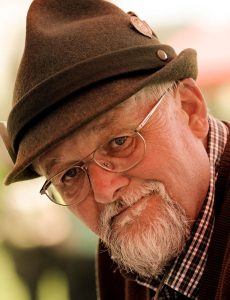Welcome
We are pleased with your interest in the Kleine Münsterländer (KlM). We are the international umbrella organization of the national KlM clubs, which joined us in 2006. We wish to preserve and strengthen this beautiful, old hunting dog breed internationally, the classic KlM. We are working with our member clubs to keep our breed healthy and proficient. In other words, we have committed ourselves above all to international performance breeding of the KlM.
For decades, the Federation Cynologique Internationale (F.C.I.) has ensured that pedigree dogs follow the same breeding “standard” in all of the member countries. In all member countries, however, only physique and coat are judged uniformly and comparably as “standard” and then bred according to these standards. For this, the national F.C.I. organizations issue a F.C.I. pedigree for puppies, which documents that they come from a pedigree breeding.
With hunting dogs like the KlM it is not sufficient, however, that the dogs are bred with comparable physique and coat. They must also be proficient in their hunting tasks; otherwise, there would be no hunting dogs, but only sporting, companion or working dogs for other special assignments.
And here the problems begin:
• Hunting conditions differ greatly internationally
• Legal conditions differ greatly internationally, for example animal protection and the practice of hunting
• Hunting traditions differ greatly internationally
• The types of game, which can be hunted primarily, are dependent on the differing agricultural structures in the each country.
On what should the breeding of hunting dogs be based on? With hunting dogs, we know specialists with a focused field of activity, like the bloodhound, upland hunting dogs or retrievers, for example. And then there are the generalists like the continental pointing dogs. These dogs work in the field, forest and water, before the shot and after the shot. These breeds are also called versatile hunting dogs. The KlM is a versatile hunting dog!
But is the KlM bred and maintained as a breed of versatile hunting dogs? Unfortunately, not! The F.C.I. has left it to its member countries to determine whether they want to test hunting qualifications as a prerequisite for breeding at all. And if so, according to which criteria and standards the test should take place.
Our member clubs at KlM International (KlM-I) want to breed the KlM as a hunting dog for hunters. Hunters need healthy, reliable and proficient dogs, which can work well with them.
Some hunters place great value on their dog being a beloved member of the family, and not just a good hunting companion – just like the KlM.

Berning, Provinzialstraße 24, D-46499 Hamminkeln, dietrich_berning@t-online.de, 0049 / (0) 2873 / 261
If we want to preserve the KlM as a „versatile” breed of hunting dog over the long term, as it is described in the F.C.I. breed standard, then we have to work closely together internationally, exchange experiences, promote the breeding, health and performance abilities of our KlM, identify strong genetic make-up, and exchange good blood lines across international borders. Here there is a lot to do.
On one hand, trusting international cooperation solidifies breeding, but this also requires time and is only possible in small steps. Everything takes place on a voluntary basis. But we can do a lot for the future of this breed of our little hunting companions and a lot also for humane, “fair” hunting practice in our countries. (kb)
Bernd-Dieter Jesinghausen, Honorary President, Schwabach, May 2013
